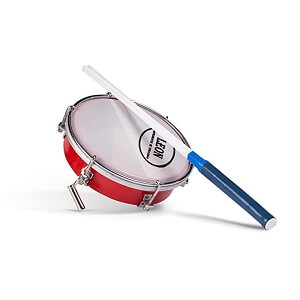Tamborim
 The tamborim is a Brazilian drum of Portuguese and African origin. It is a small handheld frame drum used in samba, pagode, bossa nova, choro, and other Brazilian folk rhythms. It is typically made of a metal frame with a nylon or plastic head, although it can also be made of wood or plastic with an animal skin head.
The tamborim is a Brazilian drum of Portuguese and African origin. It is a small handheld frame drum used in samba, pagode, bossa nova, choro, and other Brazilian folk rhythms. It is typically made of a metal frame with a nylon or plastic head, although it can also be made of wood or plastic with an animal skin head.
Because of the similarity between their names, it is often confused with the tambourine, a frame drum with metal jingles around the perimeter found in much music around the world, including the United States. The tamborim can also be confused with the pandeiro, the Brazilian version of the tambourine. Unlike the tambourine, however, the tamborim has no jingles and is played with a wooden stick, a finger, or a bundle of long flexible nylon rods that strike the head all at once. It typically plays a punctuated syncopated pattern that fits with the other interlocking rhythms in an ensemble.
n a Brazilian Samba School setting, metal frame/nylon head tamborins (plural spelling) are played with the bundled-nylon rod baqueta. The resulting sound is a loud, high-pitch “CRACK” that cuts through the din of the other drums, making ear plugs a necessity. The tamborins in the Samba School maintain the underlying groove of the samba rhythm by playing carreteiro, which in Western musical terms is a constant series of 16th-notes played with a Brazilian “swing.”